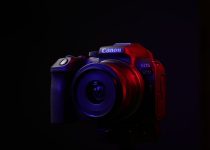DSLR Vs. Digital Camera: Unveiling The Key Differences
The world of photography has undergone a digital revolution, leaving many aspiring shutterbugs wondering: DSLR or digital camera? Understanding the fundamental differences between these two camera types can help you make an informed decision that aligns with your photographic needs and aspirations.
**Sensor Size and Image Quality**
DSLRs, or digital single-lens reflex cameras, are renowned for their superior image quality. This is primarily attributed to their larger sensor size compared to digital cameras. A bigger sensor allows for more light to be captured, resulting in images with greater detail, dynamic range, and reduced noise, especially in low-light conditions.
**Lens Interchangeability**
DSLRs offer unparalleled lens interchangeability, allowing you to customize your camera system with a wide range of lenses. This flexibility empowers you to capture different perspectives, focal lengths, and apertures, catering to a diverse array of photographic genres. From wide-angle landscapes to telephoto portraits, DSLR users can effortlessly swap lenses to achieve their desired aesthetic.
**Optical Viewfinder**
DSLRs feature an optical viewfinder, which provides a direct and unadulterated view of the scene being captured. This real-time feedback allows for precise composition and focusing, making DSLRs ideal for fast-paced action photography. Additionally, optical viewfinders are less prone to glare and color distortion, ensuring accurate representation of the scene.
**Manual Controls**
DSLRs grant photographers granular control over camera settings, offering a comprehensive range of manual adjustments. This level of customization empowers users to fine-tune exposure, aperture, shutter speed, and ISO, enabling them to capture images that truly reflect their artistic vision.
**Durability and Weather Resistance**
DSLRs are typically constructed with robust materials, such as magnesium alloy, to withstand the rigors of professional use. They are often equipped with weather-sealing features, making them suitable for outdoor photography in challenging weather conditions.
**Compactness and Convenience**
Digital cameras, on the other hand, excel in terms of compactness and convenience. They are significantly smaller and lighter than DSLRs, making them ideal for casual photography, travel, and everyday use. Digital cameras often feature built-in flash, zoom lenses, and intuitive user interfaces, catering to a wider audience.
**Price Range**
The price of a camera varies depending on its features and quality. DSLRs are generally more expensive than digital cameras, as they offer a higher level of performance and customization. However, digital cameras provide a more affordable entry point for aspiring photographers or those who prioritize convenience over professional-grade capabilities.
**Conclusion**
The choice between a DSLR and a digital camera ultimately depends on your individual needs and preferences. If you seek superior image quality, lens interchangeability, manual controls, and durability, a DSLR is the ideal choice. However, if compactness, convenience, and ease of use are your priorities, a digital camera may be a more suitable option. Understanding the key differences between these two camera types will empower you to make an informed decision that will enhance your photographic journey.


